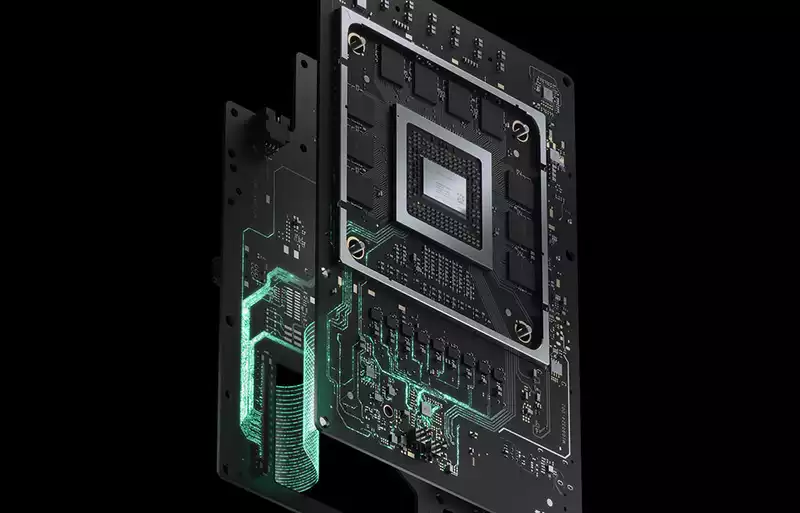The Xbox Series X isn't even out yet and I'm already envying the upgrade. My main PC is powered by a Core i7-4790K "Devil's Canyon" processor, flanked by a GeForce GTX 1080 Ti and 32GB of RAM. It's not a slow rig by any means, even with today's CPUs, but the Xbox Series X specs revealed here certainly outperform it in most areas. In fact, it may even surpass the high-end gaming PCs that can be built today.
The Xbox Series X is more powerful than most gaming PCs today, Microsoft revealed in a blog post today. Of course, we already knew that the Xbox Series X has serious hardware, but now the actual specs have been revealed. Let's take a quick look.
Starting with the CPU, the custom Zen 2 chip on the Xbox Series X has 8 cores at 3.8 GHz, or 3.66 GHz when developers take advantage of simultaneous multi-threading (AMD's equivalent to Intel's hyper-threading). This basically divides the physical cores into virtual cores (threads) to handle workloads more efficiently.
The Xbox Series X uses a custom CPU and has no direct PC equivalent. However, the closest in terms of specs is the Ryzen 7 3700X ($300 CPU), which has 8 cores and 16 threads, clocked at 3.6 GHz (base) to 4.4 GHz (maximum boost). While not as good as Intel's Core i7-9700K, it is one of the best CPUs for gaming.
On the graphics side, we knew that the Xbox Series X uses a custom GPU based on AMD's next-generation RDNA 2 architecture. Microsoft had previously stated that it would offer 12 TFLOPs of graphics power, and while it is difficult to read much into the TFLOPs number, Microsoft has now revealed that it will feature 52 compute units running at 1.852 GHz and 16 GB of GDDR6 memory
and that it will be equipped with 16GB of GDDR6 memory.
To put this in perspective, the RDNA 1-based Radeon RX 5700 XT has 40 CUs with a base clock of 1,605 MHz, a "game" clock of 1,755 MHz, a boost clock of 1,905 MHz, and 8 GB of GDDR6 memory. On Amazon, the RX 5700 XT costs about $400 by itself.
So: the Xbox Series X GPU has 30% more compute units, twice as much memory, faster clocks (excluding the 5700 XT's boost feature), and a bigger memory bus. On top of that, it will benefit from whatever architectural upgrades RDNA 2 introduces. And let's not forget support for real-time ray tracing. [AMD's Sebastian Nussbaum said, "Xbox Series X is the biggest generational leap we have made with Microsoft in SoC (System on a Chip) and API design, and AMD is a trusted Microsoft partner in this effort, It is truly an honor," said AMD's Sebastian Nussbaum, "The Xbox Series X will be a beacon of innovation leadership in this console generation and will propagate innovation throughout the DirectX ecosystem this year and next.
Microsoft's target performance is to be able to maintain 60 fps at 4K and up to 120 fps at lower resolutions (probably 1080p). Load times should also be fast.
On the storage side, the Xbox Series X has a custom 1TB NVMe solid state drive that can be doubled by its own expansion slot (that's right, memory cards are back). Upgrading storage with a dedicated slot is expected to be expensive, as Microsoft says the speed will be the same as a fast internal SSD; you can also add an external drive via USB 3.2 to store games, but it won't run as fast and and to actually run the games, the games would need to be transferred to the internal memory.
Related to this is what Microsoft calls the Xbox Velocity Architecture. This is a fancy term for tight integration between storage and software, optimized for streaming in-game assets.
"This will unlock new capabilities never before seen in console development, giving developers instant access to 100GB of game assets. All of the components of the Xbox Velocity Architecture combine to create an effective multiplier of physical memory that is, quite literally, a game changer," Microsoft explains.
Microsoft has provided Digital Foundry with a few more details for those interested in learning more about the upcoming console and its features and capabilities. In short (albeit too late), it's a monster gaming PC in console skin; AMD has yet to release an RDNA 2-based GPU for PCs, so direct comparisons are still difficult, but those are expected to appear this year.
In the meantime, I'm going to start planning my PC upgrades, which I'm sure will include a new GPU for the PC, and a new GPU for the PC for the PC.
.

Comments